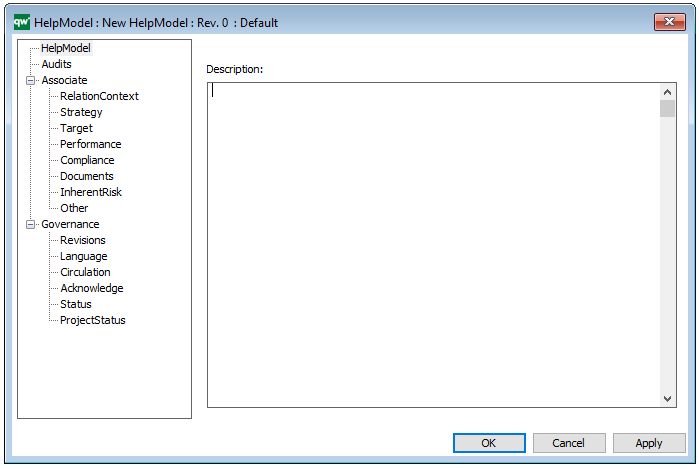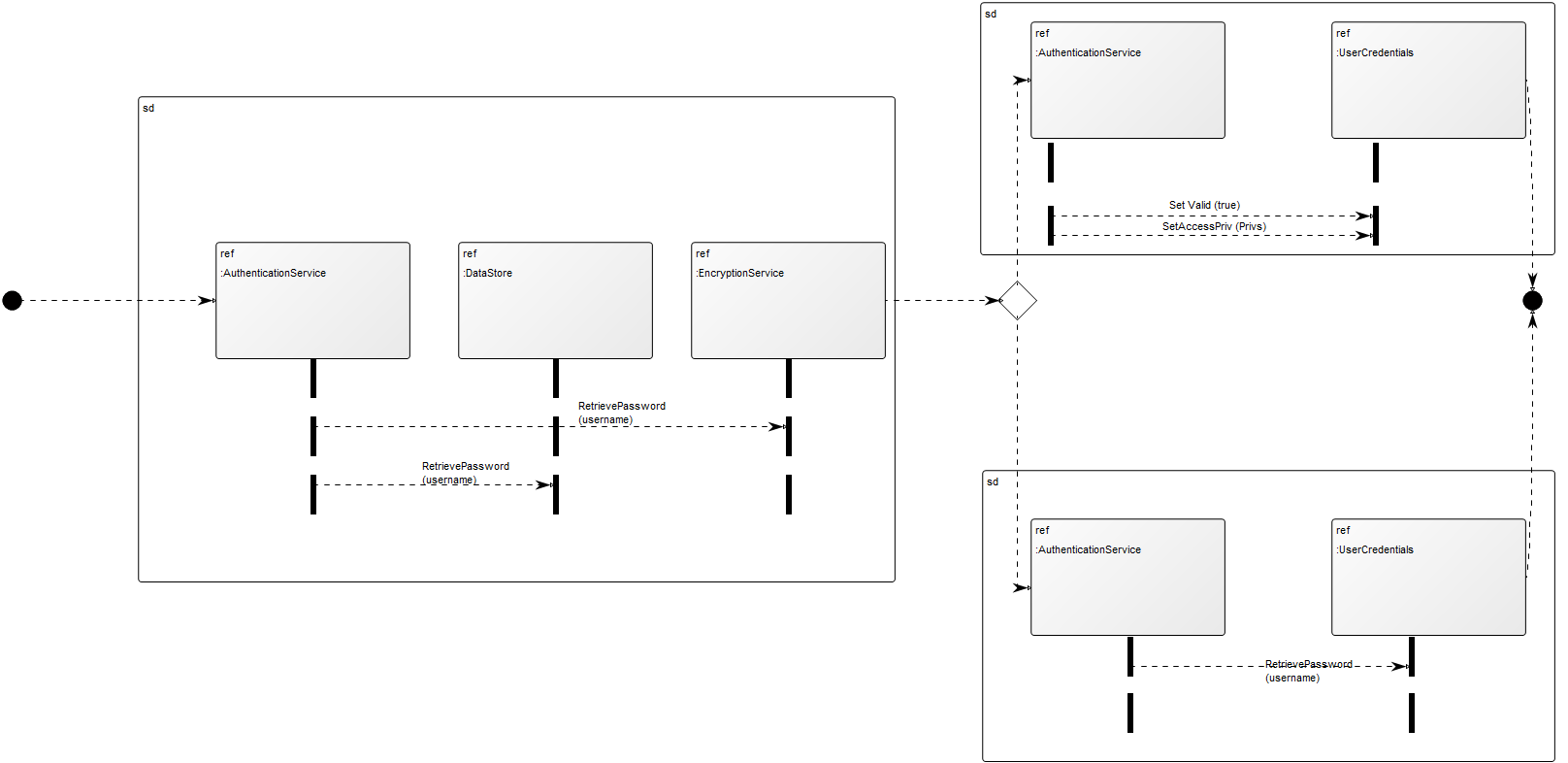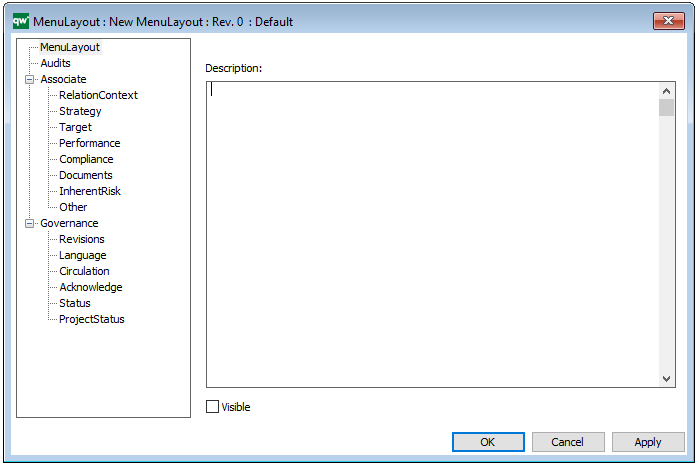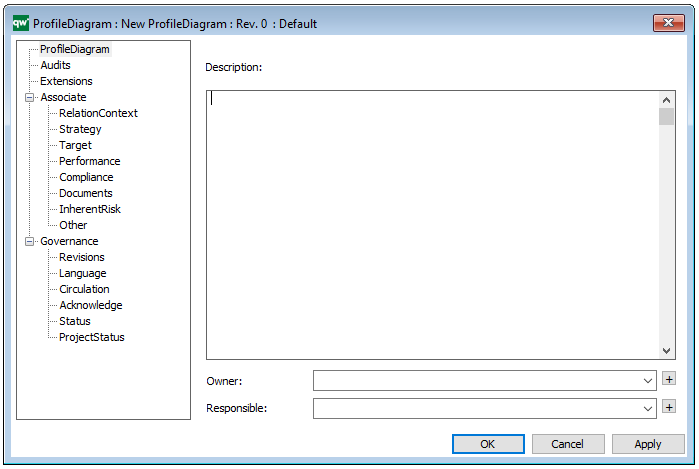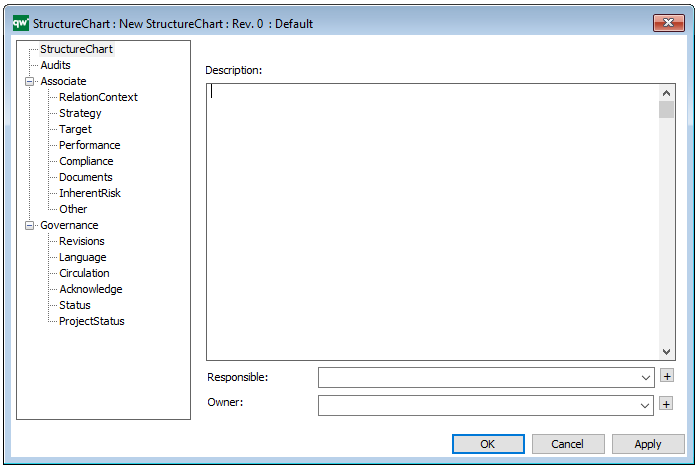Purpose: The purpose of the Dialog Layout template is to provide a representation of a dialog design for the system developed in the Dialog Model.
Core concerns: The Dialog Layout template enables you to model Windows, Fields, Menu Layouts and General Concepts.
Relation to other templates: The Dialog Layout is a QualiWare system template and is related to the Dialog Model, Menu Layout, Report Layout and Help Model.
Properties and metadata: The Dialog Layout template can for example retain the following information:
- A description of the diagram
- A link to Epilog and Prolog
- Audits (auto generated information regarding its current state and access rights)
- Associated documents, diagrams and other objects
- Inherent Risk detailing risk considerations
- Governance information detailing information about the published model and who has been involved in the approval of the layout
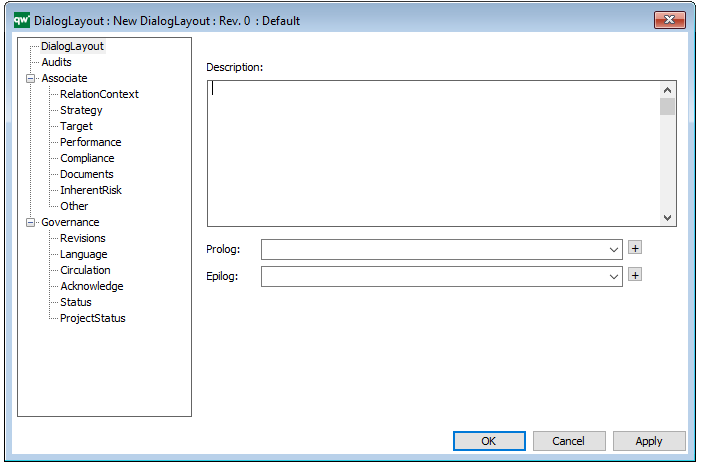
The above picture shows the properties dialogue window for the Dialog Layout template where you can view and edit the model’s properties in QualiWare Lifecycle Manager.

